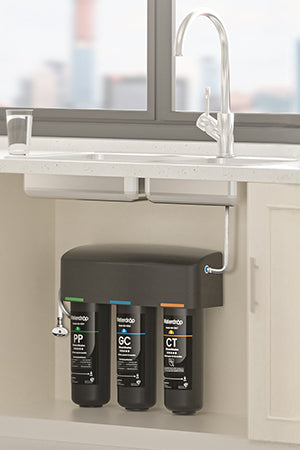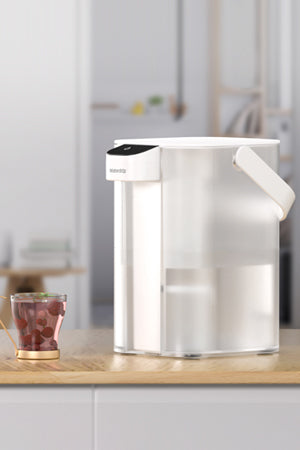Reverse osmosis (RO) is a water purification
process that has gained popularity worldwide, including in Singapore. With increasing concerns over water quality, many households and businesses are
turning to reverse osmosis systems to ensure access to clean and safe drinking water. But what exactly is reverse osmosis, and how does it work? This guide
will answer all your questions and help you understand why reverse osmosis might be the right choice for your water filtration needs.
Understanding Reverse Osmosis
The Basics of Reverse Osmosis
Reverse osmosis is a water purification technology that removes impurities by forcing water through a semipermeable membrane. This process filters out
contaminants, leaving you with pure water that’s free from
harmful substances
like heavy metals, bacteria, viruses, and chemicals.
The term “reverse” in reverse osmosis refers to reversing the natural osmosis process. In osmosis, water moves from a low-concentration solution to a
high-concentration solution. Reverse osmosis, on the other hand, uses pressure to move water in the opposite direction, removing dissolved solids and
impurities in the process.
How Reverse Osmosis Works
Reverse osmosis systems typically involve multiple stages of filtration:
- PreFiltration: Removes larger particles such as sediment and chlorine to protect the RO membrane.
- RO Membrane: Filters out up to % of dissolved contaminants.
- PostFiltration: Enhances water taste by removing residual impurities.
- Storage Tank: Stores purified water until its ready for use.
- Dispensing: Provides easy access to filtered water through a faucet.
Each of these stages ensures that the water you consume is not only clean but also tastes better.
Benefits of Reverse Osmosis in Singapore
Addressing Water Quality Concerns
While Singapore boasts high-quality tap water, some residents may still prefer additional filtration to remove residual chlorine, fluoride, or other
substances. Reverse osmosis provides an extra layer of protection, ensuring that your water is as pure as possible.
The quality of drinking water is crucial for overall health and well-being. Pure, contaminant-free water is essential for key bodily functions such as
hydration, digestion, and detoxification. Conversely, pollutants like heavy metals, bacteria, pesticides, and other harmful substances in water can lead to
significant health risks.
Drinking high-quality water not only reduces the likelihood of chronic illnesses but also promotes healthier skin and enhances energy levels. By using
advanced filtration systems or regularly testing water quality, you can ensure safe, clean water—a vital foundation for a healthier life.
Removal of Contaminants
Reverse osmosis systems can effectively remove:
- - Heavy metals e.g., lead, mercury
- - Nitrates and solfates
- - Bacteria and viruses
- - Pesticides and herbicides
- - Microplastics
This makes it an excellent choice for families, especially those with young children or individuals with weakened immune systems.
Improved Taste and Odor
By eliminating impurities,
reverse osmosis significantly improves the
taste and odor of your drinking water. This is particularly beneficial for making beverages like coffee and tea or for cooking.
Cost-Effective and Eco-Friendly
Investing in a reverse osmosis system can save money in the long run by reducing the need for bottled water. Additionally, it’s an environmentally friendly
option, as it minimizes plastic waste.
Investing in a
reverse osmosis (RO) system is
not only beneficial for your health but also for the environment. By providing clean and safe drinking water directly from your tap, an RO system
significantly reduces the reliance on single-use plastic bottles, helping to decrease plastic waste in landfills and oceans.
Additionally, using a home filtration system minimizes the carbon footprint associated with manufacturing, transporting, and disposing of bottled water. By
choosing an eco-friendly solution like a reverse osmosis system, you can enjoy fresh, purified water while contributing to a healthier planet.
Applications of Reverse Osmosis
Household Use
In Singapore, many households install reverse osmosis systems under the sink or as countertop units. These systems provide a steady supply of clean water
for drinking, cooking, and other daily needs.
Commercial and Industrial Use
Reverse osmosis is also widely used in industries such as:
- - Food and beverage production
- - Pharmaceuticals
- - Electronics manufacturing
For these sectors, pure water is essential to maintain product quality and comply with safety standards.
Is Reverse Osmosis Suitable for You?
Factors to Consider
When deciding if reverse osmosis is the right choice, consider:
- Water Quality: Test your tap water to determine the level of impurities.
- Budget: Reverse osmosis systems vary in price, so choose one that fits your budget.
- Maintenance: Regular maintenance, such as replacing filters, is essential to keep the system running efficiently.
Choosing the Right System
In Singapore, several brands offer reverse osmosis systems tailored to local needs. Look for systems with certifications from reputable organizations, such
as NSF International, to ensure quality and performance.
Conclusion
Reverse osmosis is an effective and reliable water purification method that ensures you have access to clean, safe, and great-tasting water. Whether for
household or commercial use, investing in a reverse osmosis system can significantly improve your water quality and enhance your overall health.
As Singaporeans continue to prioritize health and sustainability, reverse osmosis stands out as a practical and environmentally friendly solution. Explore
your options today and take the first step towards better water for a better life.


































































